A computer’s motherboard is, in simple terms, the spinal cord of the entire computer system.
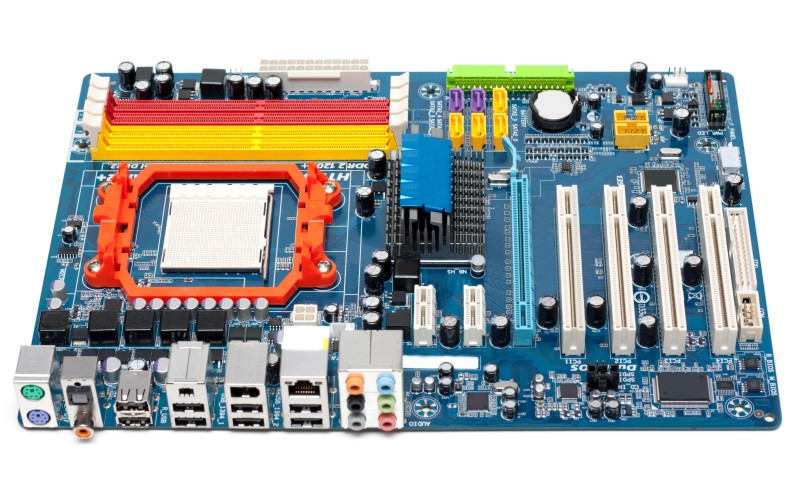
It is the central electronic board that ties all the other parts of the computer together and allows them to communicate with one another.
Some of the major components of a motherboard include the main processing units (such as CPU, GPU, RAM etc), the power and data connectors, capacitors, heat sinks, fans, slots etc.
On all motherboards, there are also connection ports called “expansion slots”, which are used for adding additional components to your build such as network cards, audio cards, video cards and more.
The other components of the computer that plug into the motherboard, either directly or via a wired connection, are often referred to as “peripheral components”.
Let’s take a look at 10 of the main parts of a common computer motherboard and their main functionality:
1) CPU
Beyond the motherboard, the CPU, or Central Processing Unit, is the most important component in the entire computer system.
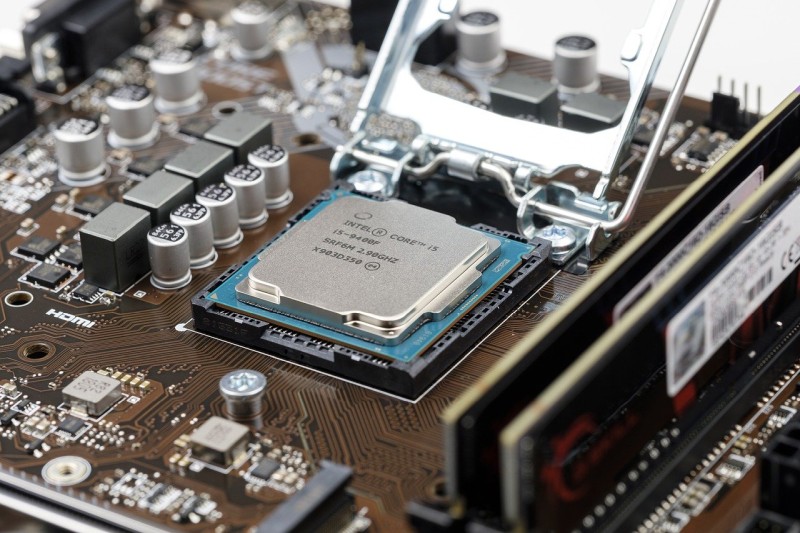
The CPU acts as the brain of the computer system, where instructions from programs, the operating system, and other components are processed.
The CPU is a small, flat silicon chip located within a socket on the motherboard as shown above. The CPU is responsible for performing the majority of the computer’s instruction processing.
Depending on the CPU, however, it can sometimes be used to perform some low intensity graphics processing as well.
The two major manufacturers of CPU chips are Intel and AMD.
Some popular PC CPUs from Intel include Intel Core i3, Core i5, and Core i7.
On the other hand, some popular AMD desktop CPU models include Ryzen 3, Ryzen 5 and Ryzen 7.
2) BIOS
The BIOS, or Basic Input Output System, is a piece of low-level machine software code stored in an EPROM chip located on the motherboard.
An EPROM chip is a special Erasable Programmable Read Only Memory module which contains the BIOS code. Unlike RAM content, the BIOS code is not lost when the computer is powered off.
The BIOS is the first software to run when you boot up your PC, as it is responsible for performing the POST (Power On Self Test) diagnostic tests on startup.
The BIOS software comes installed by default on each machine’s motherboard when it is manufactured, unlike other operating systems that require either the manufacturer or the end user to download the software.
The BIOS is responsible for instructing the computer on how to perform basic functionalities like booting, keyboard control, hard drive and storage settings (like RAID configuration) etc.
It is also in charge of more advanced tasks such as identifying and configuring hardware components like hard drives, CPUs, optical drives, and others.
Some popular BIOS manufacturers/developers include American Megatrends (AMI), Phoenix Technologies, IBM etc.
3) RAM
RAM, or Random Access Memory, is a computer’s short-term memory. As opposed to long-term memory components such as the hard drive, RAM is only responsible for temporarily storing the data that is currently in use by programs and the computer in general.
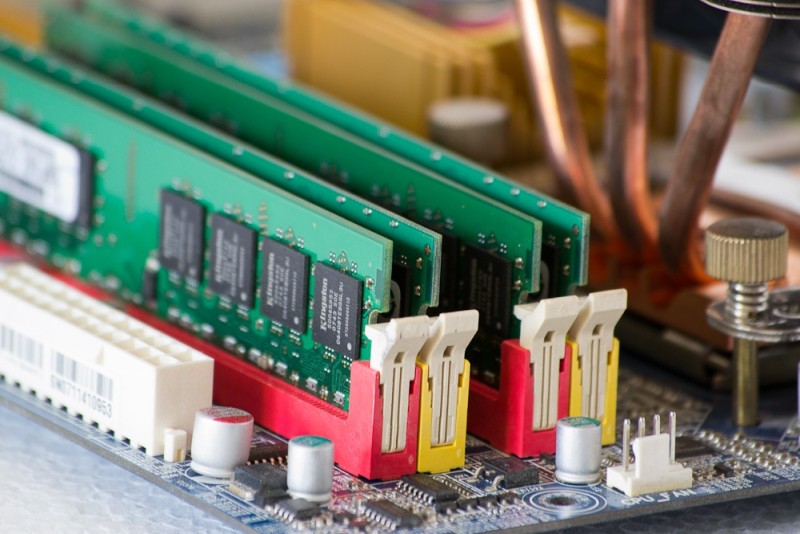
You must note that data stored in RAM is lost when the computer is powered off. That’s why RAM is also called “volatile” memory.
RAM keeps your computer running smoothly when you’re performing multiple tasks at once, such as opening multiple browser tabs or running intensive applications.
This is because RAM is one of the fastest data storage components in computers (compared to hard disks for example) so programs that are running from RAM perform much faster.
If your computer lacks sufficient amounts of RAM, performing routine tasks and opening applications will feel extremely sluggish because the programs are forced to be loaded from the hard drive since RAM capacity will not be enough to hold the application.
4) GPU
As the name would suggest, the GPU, or Graphics Processing Unit, is designed to handle the majority of graphics processing on the machine.
Originally designed to accelerate the rendering speed of 3D graphics, GPU’s have evolved over the years to perform much more advanced tasks.
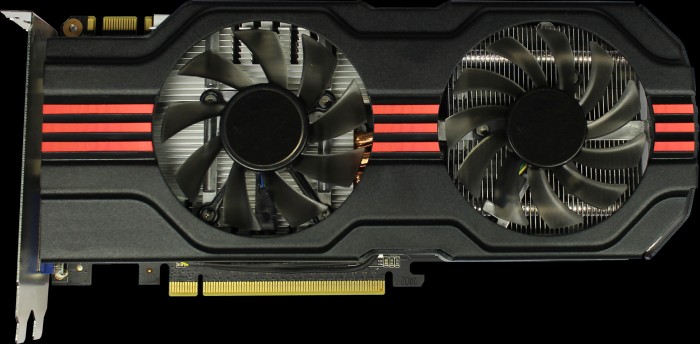
While most well known for their capabilities in gaming, GPU’s can also be used to help artists render videos and create realistic environments, provide additional computing power for high performance computing applications, and even assist with deep learning programs.
GPU’s come in two distinct types: Integrated and Discrete.
Integrated graphical processing units, which comprise a majority of the GPU’s on the market, allow for thinner and lighter machines, as well as consume much less power.
GPU’s that come as chips on the motherboard or included inside the CPU are considered “Integrated GPUs”.
Discrete graphics processing units, also known as “dedicated graphics cards”, are better suited to handle more resource-intensive applications.
Dedicated graphics provide more power at the expense of additional power consumption and increased heat production.
These dedicated GPUs are usually connected to the motherboard on PCIe expansion slots (see later on in this article about PCIe).
Some examples of Integrated GPU include Intel HD Graphics, Intel Iris Graphics, AMD Radeon etc.
Some examples of Discrete GPUs brands include Nvidia, ASUS, MSI etc.
5) PCI and PCIe Slots
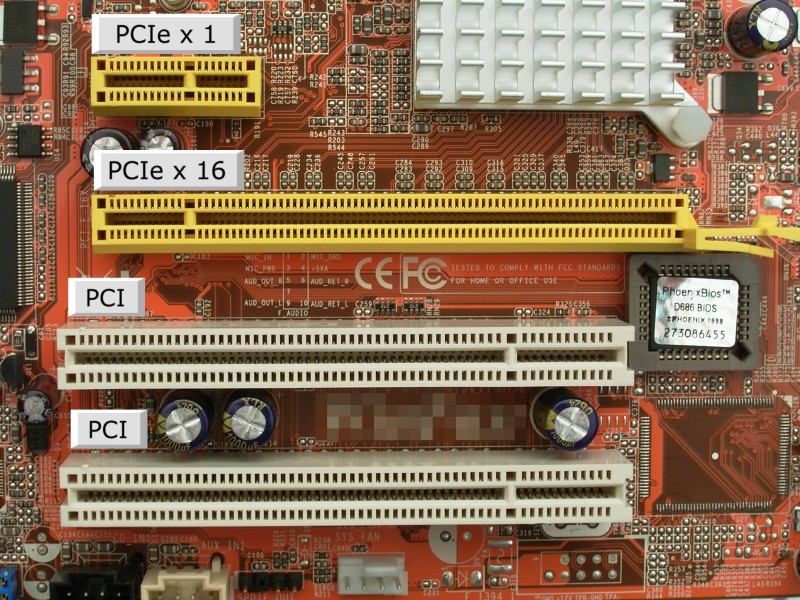
Image: Rainer Knäpper. The original uploader was Smial at German Wikipedia. – Transferred from de.wikipedia to Commons., CC BY-SA 2.0 de, https://commons.wikimedia.org/w/index.php?curid=2958317
Peripheral Component Interconnect, or PCI, is a connection interface used to attach peripherals to the motherboard.
Most popular between 1995 and 2005, PCI was commonly used to connect things like video cards, sound cards, and network cards.
On more modern machines, the majority have transitioned to PCIe expansion slots however you will still find PCI slots on desktop PC motherboards for backwards compatibility.
PCIe, or Peripheral Component Interconnect Express, typically refers to the expansion slots located on the motherboard itself and offering faster communication speeds compared to the older PCI standard.
The PCIe interface enables high bandwidth communication between attached devices and the motherboard.
While video cards are the most common PCIe cards that you’re likely to encounter these days, storage devices (like NVMe SSD storage modules) are also commonly connected to PCI-e slots.
6) CMOS Battery
The CMOS battery is a small removable round battery found on the motherboard of every PC.
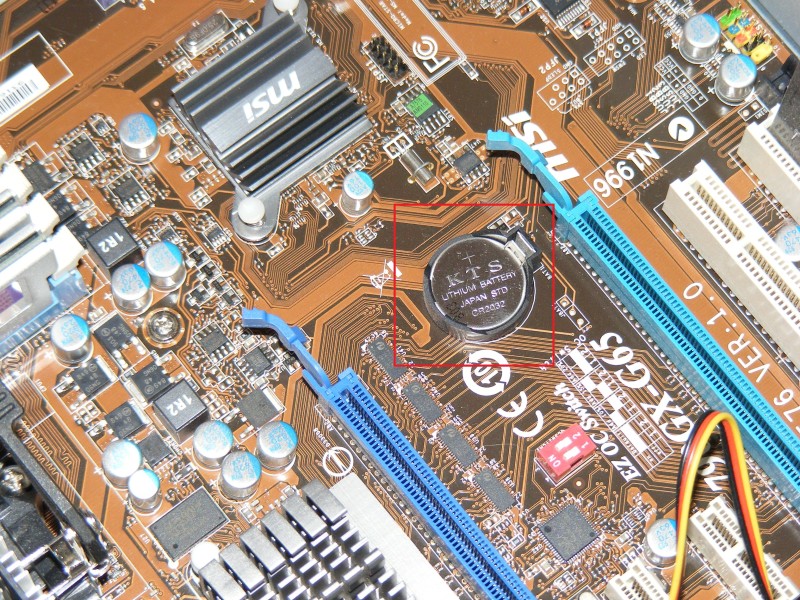
This battery’s main function is to power the CMOS, which is a small amount of memory that stores the computer’s BIOS information and settings, even while the computer is powered down.
Without the CMOS battery, you would need to reset your BIOS configuration, such as boot order and date / time settings, each time you powered on your PC.
7) Disk Drive Connectors and Controllers
On all desktop PC motherboards, you will find a variety of disk drive connectors and controllers. Some of the most common connectors and controllers you will find include:
SATA Connector
One of the most popular drive connectors for storage disks to the motherboard of the computer is via a Serial ATA (SATA) connection.
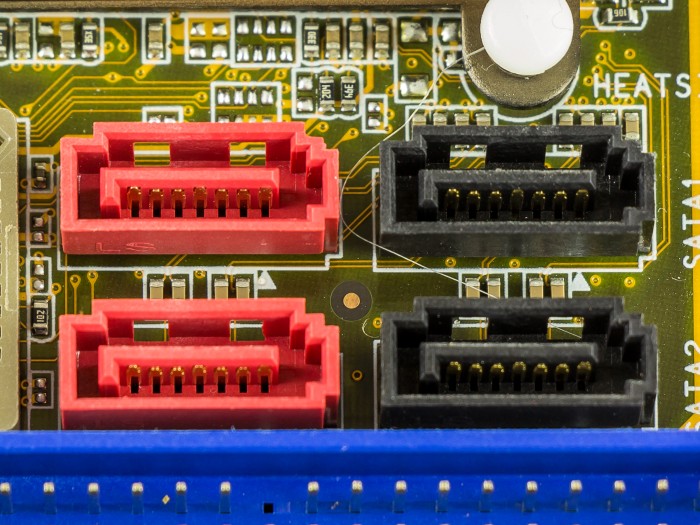
Introduced in 2001, SATA, or Serial ATA, is the standard hardware interface for connecting storage and optical drives to a computer machine.
Many computers manufactured today use the SATA interface to interface with their hard drives, however some servers and workstations may utilize SCSI to connect to solid state drives.
SATA provides a bus interface to the motherboard that is not considered very fast nowadays since there are other faster connection standards such as the PCI-e discussed before.
However, SATA version 3.0 is still popular for connecting disk drives to the motherboard.
Floppy Disk Connector
A floppy cable is a ribbon cable that is used to connect a floppy disk drive to the motherboard of a machine via the floppy channel.
The cable features two drive connectors, allowing multiple floppy disk drives to be connected to one floppy controller.
Since floppy drives don’t have a primary or secondary jumper like most hard drives, floppy drives are chosen via cable select.
Floppy connectors will have a cable twist to identify the proper drive connector. Like an IDE cable, most floppy cables also feature a red strip along one side of the ribbon cable which is used to indicate pin 1.
IDE controller
Another component is the IDE, or Integrated Drive Electronics controller.
The IDE controller is a small circuit board that provides instructions on how the hard drive should store and access data.
Many IDE controllers will also include some memory to boost hard drive performance.
Before IDE became standard, controllers and hard drives were often separate, and were likely to be proprietary to the manufacturer.
This meant that back then, a controller from one manufacturer might not be compatible with a disk drive from another manufacturer.
IDE controllers are for connecting low-speed devices such as tape drives, CD-ROM, DVD drives or older low-speed hard disk drives (HDD).
8) Ports for Connecting Peripheral Devices
Most motherboards offer a wide variety of ports to connect peripheral devices, expansion cards, and external drives.
These ports will vary depending on the manufacturer and model of motherboard, but some ports you’re likely to find include:
- USB ports: used to connect to USB devices like mice, keyboards, external drives, etc.
- HDMI / DisplayPort / VGA ports: video and display connectors to output video and audio to a monitor.
- Ethernet / RJ45 ports: used to connect to a wired ethernet connection
- PS/2 ports: now obsolete, PS/2 is an older standard used to connect to keyboards and mice before USB became commonplace.
- Serial Port
- Parallel Port
9) Heat Sinks, Fans, etc.
Heat sinks and fans have a critical role to play in the function of your motherboard; without these cooling systems, the heat generated by the CPU and other integrated circuits on the motherboard could be enough to damage internal components of the machine.
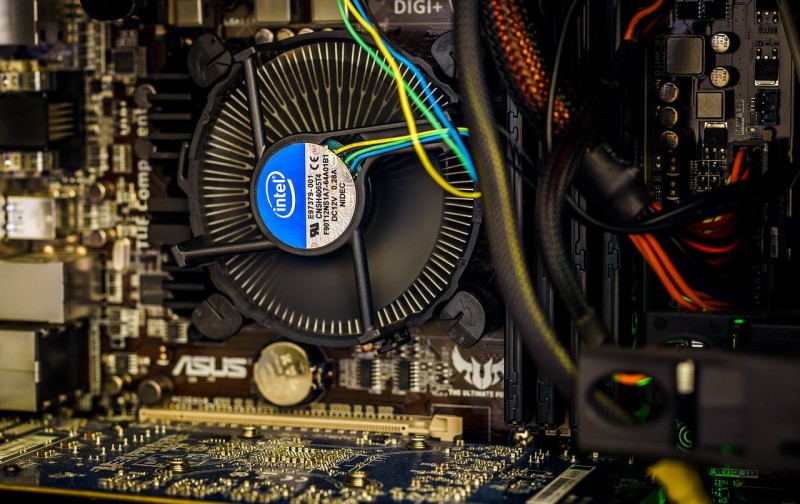
The heat sink uses a thermal conductor and paste that carries heat away from the CPU, allowing it to safely dissipate throughout the rest of the computer.
From there, the fans moves cool air across the heat sink, which pushes hot air away from the computer.
Some computers even take their cooling systems a step further and opt for a water-cooling system, where cooled water is pumped through a system of tubing inside the machine to cool off the internal components.
10) Power Supply and Cables
The power supply unit, or PSU, is a hardware component that supplies stable power to the other components of the computer.
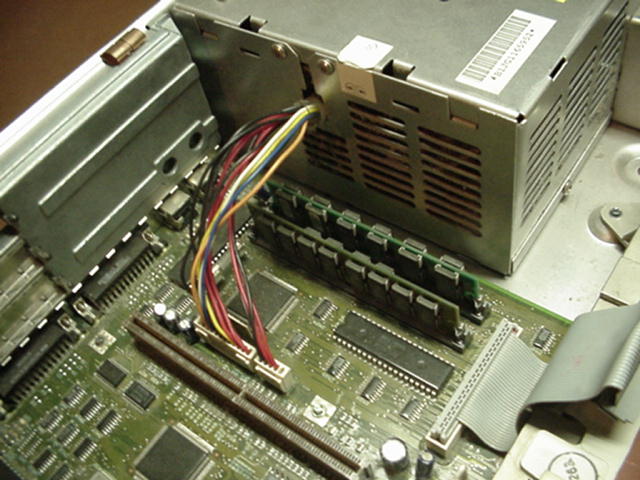
It converts AC (alternating current) electricity coming from your home’s power outlet into a steady, low-voltage DC (direct current) that is usable by the computer.
Usually a computer PSU outputs various DC voltage levels such as 5V, 12V etc
On the front of the power supply, there are several cables that connect to the motherboard and other internal components of the machine.
The power supply will typically connect to the motherboard using an ATX style connector. Other cables you may find on a power supply unit include:
- Auxiliary connector: provides additional power to the CPU and other power hungry components.
- Berg connector: used to connect the power supply to floppy disk drives, panel lights, and reset buttons.
- Molex connector: provides power to hard drives, disk drives, and video cards.
Leave a Reply